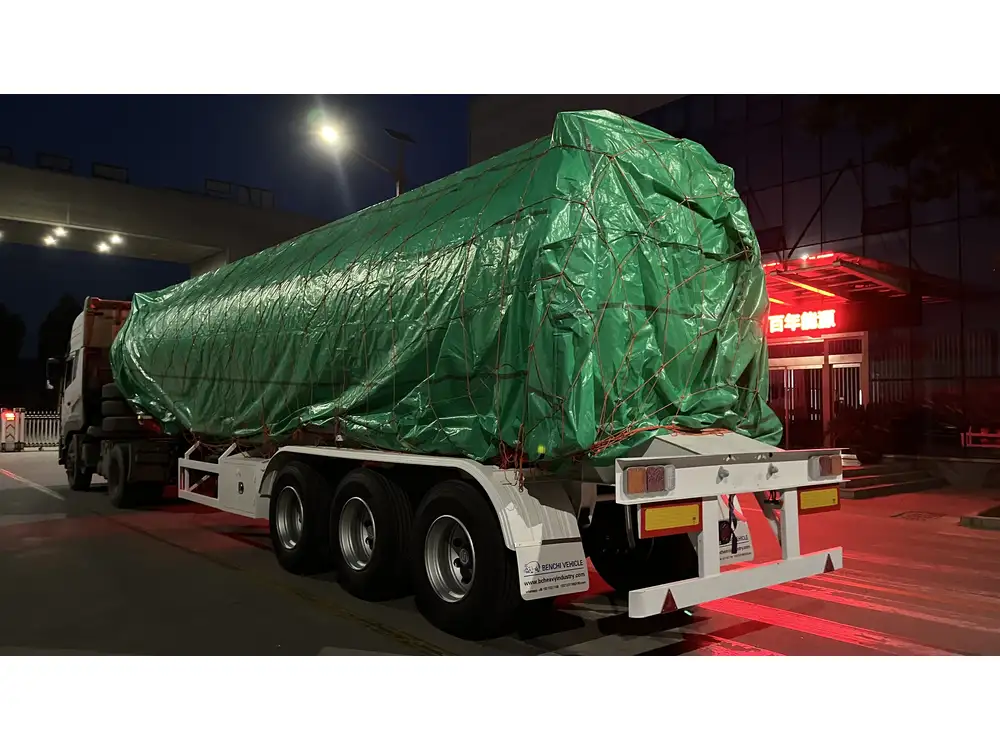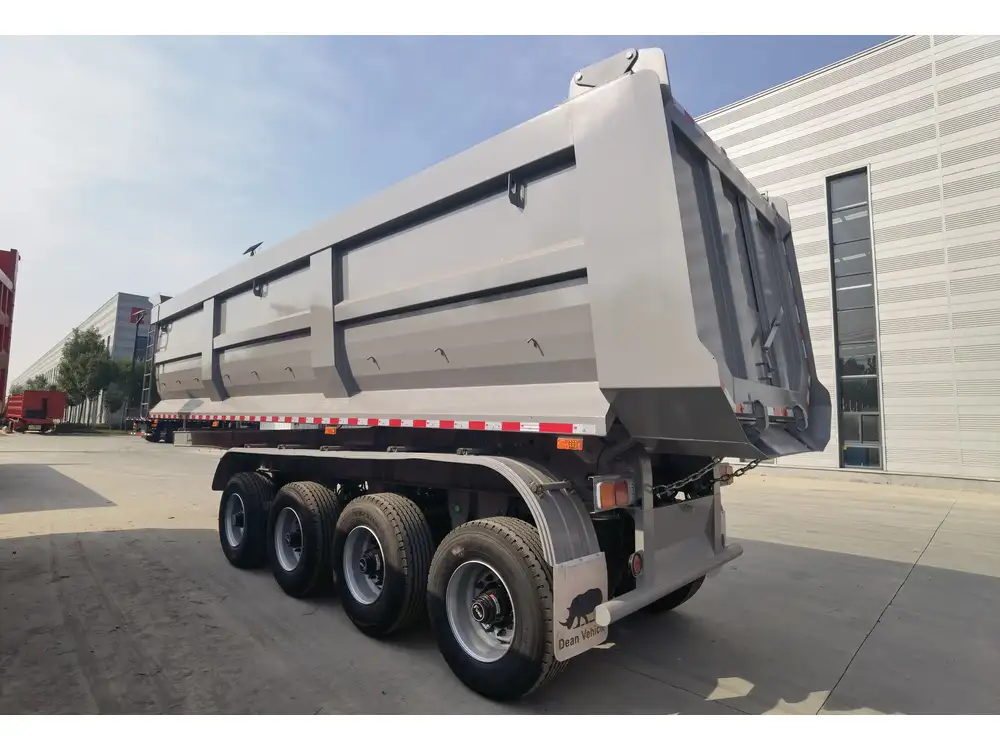The sugarcane industry is one of the vital sectors in agriculture, with semi-trailers playing a pivotal role in transporting the cane from the fields to processing facilities. Properly dumping a sugarcane trailer is crucial for ensuring efficiency, productivity, and safety during operations. This guide explores the step-by-step process of effectively dumping a sugarcane trailer while addressing common pitfalls and best practices.
Understanding the Components of a Sugarcane Trailer
Before delving into the dumping process, it is imperative to understand the key components that make up a sugarcane trailer. This knowledge aids operators in handling the equipment safely and efficiently:
| Component | Description |
|---|---|
| Chassis | The main frame providing structural integrity. |
| Dump Mechanism | Equipped with hydraulic systems for lifting. |
| Tarp System | Protects cane during transport from elements. |
| Axles | Supports load distribution during transport. |
| Wheels & Tires | Enables movement; must be properly inflated. |
Preparing for the Dumping Process
The grounds for a successful dumping operation begin well before you lift the trailer. By taking several preparatory steps, operators can prevent incidents and ensure a seamless process.

1. Conduct Pre-Dump Inspection
An effective pre-dump inspection checklist should entail the following:
- Check hydraulic fluid levels to ensure sufficient power for the dump mechanism.
- Inspect the tarp system for any tears or malfunctions that could expose the load.
- Examine tires and axles for wear and proper inflation; this is vital for safe operations.
- Ensure the trailer is hooked properly to the transport vehicle and all connections are secure.
2. Assess the Dumping Site
The surface where the trailer is to be emptied must be suitable and safe. Operators should:
- Confirm the site is level and firm to prevent the risk of overturning.
- Check for any overhead obstacles, such as power lines, that might interfere with the dumping operation.
- Mark out a safe exclusion zone around the dumping area to protect personnel and equipment.
Step-by-Step Process for Dumping a Sugarcane Trailer
With preparations in place, it’s time to move forward with the actual dumping process. Below, we outline an efficient procedure to ensure safety and precision:

Step 1: Position the Trailer
Align the trailer parallel with the intended dumping site. This positioning should allow for easy access and sufficient maneuverability once the trailer is lifted.
Step 2: Engage the Dump Mechanism
Prior to engaging the hydraulic system, make sure all personnel are at a safe distance. The following actions should be taken:
- Activate the hydraulic system, ensuring that it is done progressively to avoid sudden movements.
- As the dump mechanism begins to elevate, monitor for any unusual noises or resistance.
Step 3: Lifting the Load
- Gradually lift the trailer with the dump mechanism, keeping an eye on hydraulic gauges to ensure they remain within the operational limits.
- As the trailer reaches a tipping angle, stay vigilant; while the sugarcane will begin to shift, maintaining stability is key.

Step 4: Dumping Process
- With the trailer positioned correctly, complete the lift by engaging the release mechanism of the dump system.
- Allow the sugarcane to flow out smoothly; do not rush the process. Depending on the load weight, excess force might be required, which could put unnecessary strain on the trailer or vehicle.
Step 5: Lowering the Trailer
Once the trailer is emptied:
- Carefully lower the trailer to a horizontal position while ensuring control over hydraulic descent.
- Avoid dropping the trailer suddenly, as this could damage the dumping mechanism or create safety hazards.
Step 6: Final Checks
Conduct a post-dump inspection:
- Inspect for any residual sugarcane that may have remained in the trailer.
- Ensure all hydraulic systems are functioning correctly post-operation.
- Secure the tarp once emptied to prevent contamination during transportation.

Common Challenges When Dumping Sugarcane Trailers
Understanding potential complications during the dumping process can significantly enhance operational effectiveness. Here are some common challenges faced and suggested solutions:
| Challenge | Potential Cause | Solutions |
|---|---|---|
| Uneven Load Distribution | Poor packing or weight distribution | Regular training on load balancing during cargo handling |
| Hydraulic Failure | Low fluid levels or damage | Regular maintenance checks and a dedicated maintenance log |
| Stucking During Dumping | Ground conditions or excessive weight | Assess ground conditions; consider lighter load transport |
| Overheating | Continuous use without rest | Implement scheduled downtime for hydraulic cool-off |
Best Practices for Safe Trailer Dumping
Implementing stringent safety measures ensures all operators work within safety protocols. Here are recommended best practices:
Regular Training
All operators should undergo regular training to remain updated on:
- New technology advancements.
- Safety protocols specific to sugarcane transport and handling.

Adopting Technology
Utilizing modern technology can greatly enhance efficiency and safety:
- Hydraulic Dumping Sensors: Features that provide alerts when hydraulic systems are under strain.
- GPS Monitoring Systems: Helps in tracking both the vehicle and load for optimal routing.
Enhancing Operational Efficiency
By improving operational methods and systems surrounding your sugarcane trailer dumping process, you can achieve significant time and cost savings. Consider the following:
Implementing Standard Operating Procedures (SOPs)
Develop clear SOPs that all operators must follow. Define:
- The timeline for each stage of the dumping process.
- Quality assurance checks that must be performed before and after dumping.

Performance Metrics
Establish performance benchmarks by monitoring:
- The time taken for loading and unloading operations.
- The frequency of equipment maintenance or breakdowns.
Continuous Feedback Loop
Encourage operators to provide feedback on:
- Difficulties experienced during operation.
- Suggestions for improvements.
Conclusion
Dumping a sugarcane trailer involves meticulous planning, preparation, and execution to ensure safety and efficiency. By following the outlined steps, preparing for potential challenges, and adhering to best practices, operators can enhance their performance in this critical logistical task. With consistent training and leveraging new technologies and procedures, manufacturers can ensure a smoother operation, allowing for both increased productivity and safety in the sugarcane transport industry.
Now, the focus should be on implementation, continuous improvement, and fostering a culture of safety, ensuring that person-centric strategies underpin every operation. The backbone of any manufacturing success lies in effective operations—let’s prioritize efficiency and excellence together.



